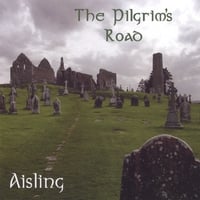 14 February 2009 - Trip to Xishuangbanna Tropical Forest Research Reserve
14 February 2009 - Trip to Xishuangbanna Tropical Forest Research ReserveWe had a pretty full day scheduled for Valentine's Day, and it started with a breakfast of rice porridge, noodles and dumplings.
I found it pretty interesting that breakfast, lunch, and dinner served pretty much the same fare with a few variations here and there. I liked most of the noodle dishes I had throughout the time I spent in China.

Some of the dumpling dishes were very delicious and others were a bit hard to take. I didn't particularly enjoy this one - stuffed with some kind of meat and the broth was high in fat content.

We had a small bus to take us to the forest reserve, which was about an hour's drive away from the botanical garden. I took a bunch of pictures out the window.
As you can see from this slope, the forest has largely been cut down for agricultural conversion - rubber tree plantations for the most part.

Patches of forest are cut and then burned prior to planting.

Hogs off to market - poor critters.

The terrain was pretty hilly and I was amazed at how steep the slopes were that were terraced and planted.

Many of the buildings along the road looked to be hospitality businesses - restaurants and tea houses.

There was often a mix of old and new in the architectural elements. The entry gate shows the Dai cultural elements, but the building in the back is modern China all the way.

When we left the main highway, there were glimpses of rural China - ramshackle shacks and buildings pressed close together.

We traveled through a lot of agricultural areas and it was interesting to see the irrigantion canals and some of the crops that were planted in the region. Xishuangbanna is in a tropical climate, so it's no surprise that the crops lean toward tropically adapted ones.

I saw a lot of farmers working the land and most of the cultivation and irrigation in this area is done by hand.

We were going fast enough that I couldn't really see what was being planted aside from rice and bananas.

The farmer straddling the irrigation ditch is pulling water up onto the planting bed.

This young man would look at home in any modern city.

Bananas with their inflorescences protected from herbivores.

I couldn't tell if this was a recycling center or the rubbish heap. I think it was the former - it seems as if most things are re-used or adapted for other uses in the rural areas.

Here's a glimpse of someone's home near the road. Cinder block construction seems to be common.

A reservoir that has a lot of scenic appeal.

We stopped at a small village to stretch our legs and to use the public toilets. The smell was pretty overpowering, but this was the only game in town for visitors. In I went . . .

ok - welcome to rural china. The trick is to watch your step and don't put anything on the floor in or near the stall. There's no door - just a half wall that sort of offers privacy whilst you squat to do your business. Unappealing? Yes - but better than a long drop in Lesotho, believe me.

A Dai restaurant - open air and up on platforms.

Town hall for this village.

The village is in a beautiful setting.

I think the lower section must be for farm animals.

The locals always seem to be hanging around together, visiting and interacting through games or the sharing of food.

Cassytha - a parasitic plant that resembles Cuscuta.

Jungle fowl - aka a farm chicken. Our domestic chickens had their origins in China.

I'm not sure what is being washed here, but it wouldn't surprise me if it's something in preparation of the mid-day meal.

Every village had lots of dogs roaming around. I thought the puppies were very cute.

These two ladies noticed that I was taking a lot of pictures and they offered to pose with their dog for me.

The dog just licked her face - some things are shared across cultural boundaries. This made me miss my dachshund, Emma. She has the fastest tongue in the west.











No comments:
Post a Comment